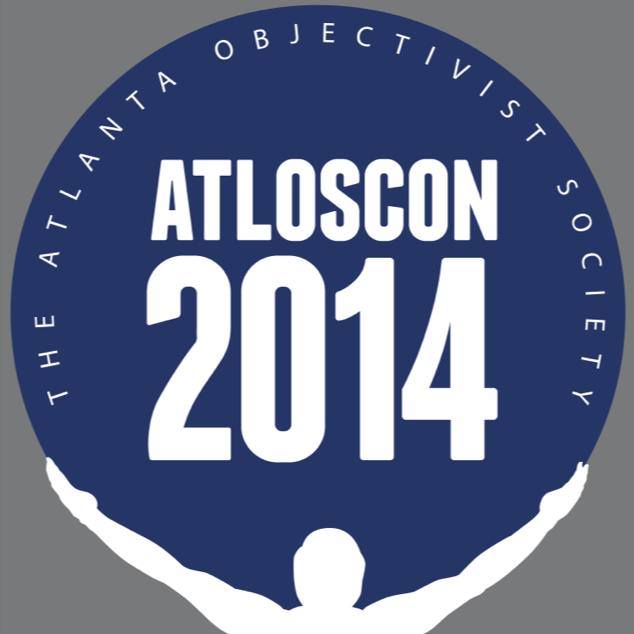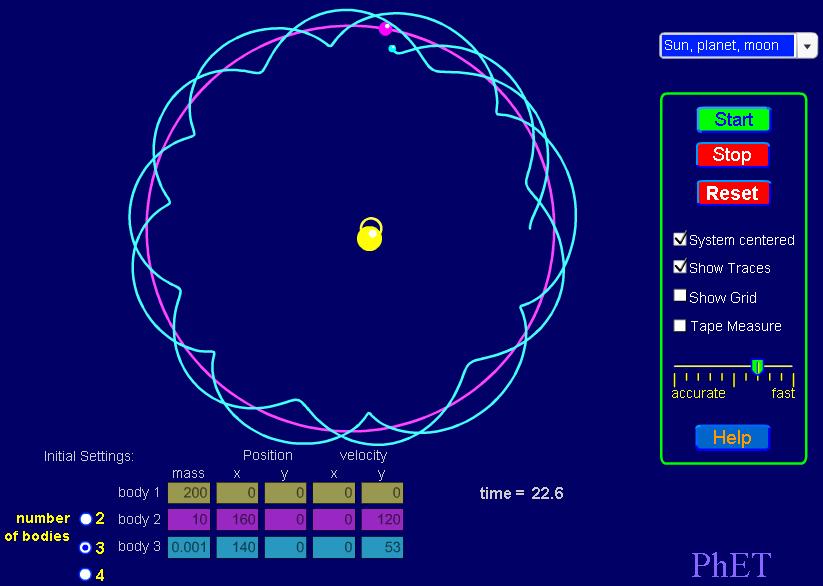This article originally appeared in Atlantis Vol. 3, #1, pp. 38-42 (Feb.-Mar. 1995). Copyright © 1995-1996 Hans Schantz
The purpose of this article is to debunk a myth by which the advocates of mysticism and non-objective science seek to undermine science in general and physics in particular. Proponents of this mythical history of science would have us believe that up until the discovery of quantum mechanics in the 1920’s, physicists were committed to a classical (or in other words, more or less objective) view of reality. They hold that these physical discoveries destroyed any hope for an objective view of reality and forced physicists to reject such notions as identity and causality. The picture such persons paint is of physical discoveries somehow validating non-objective philosophy. They portray the history of science as a progression whose climax is the discovery of its own impotence.
One popular author who attempts to link quantum mechanics with mysticism claims, “Probing inside the atom and investigating its structure, science transcended the limits of our sensory imagination. From this point on [science] could no longer rely with absolute certainty on logic and common sense.” [1]
To the contrary, I will show that this picture is a mirror image of what actually occurred – a direct reversal of cause and effect. The pre-existing non-objective philosophy not only formed the intellectual framework within which physical discoveries were interpreted, but also guided the development of new theoretical ideas. Rather than physics “proving” non-objective philosophy, it was the bad philosophy that led to erroneous interpretations of physical reality. In this post, I will examine the philosophic foundations of quantum mechanics, so as to lay the basis for a discussion of quantum mechanics in part two.
The philosophic spawning ground of quantum mechanics was the culture of Weimar Germany [2]. This period was characterized by flagrant attacks on reason and causality. One Weimar government official proclaimed, for example, “The basic evil is the overvaluing of the purely intellectual in our cultural activity, the exclusive predominance of the rationalistic mode of thought, which had to lead, and has led, to egoism and materialism of the crassest form.” [3]
Scientists were well aware of this cultural hostility. For instance, Nobel Laureate chemist, William Ostwald commented, “It is at present considered modern to speak all conceivable evil of the intellect.” [4] Science was viewed as the root cause of societal ills. “[Natural science] is represented as bearing the guilt for the world crisis in which we stand at present, and the whole of the intellectual and material misery bound up with that crisis is charged to natural science’s account,” observed Nobel Laureate physicist, Max von Laue. [5] A conspicuous embodiment of reason and intellectual achievement, science came under particular assault. As Ostwald further noted, “In Germany today we suffer again from a rampant mysticism, which… turns against science and reason as its most dangerous enemies.” [6]
A key element of these attacks on science was the denunciation of the principle of causality. As an example, consider the following diatribe from the prominent historian, Oswald Spengler:
I mean the opposition of the destiny-idea and the causality-principle, an opposition which, in its deep world-shaping necessity, has never hitherto been recognized as such…. Destiny is the word for an indescribable inner certainty. One makes the essence of the causal clear by means of a physical or epistemological system, by means of numbers, by means of conceptual analyses…. The one requires us to dismember, the other to create, and therein lies the relation of destiny to life and causality to death.[7]
Such views stand in sharp contradistinction to the view accepted, at least implicitly, in the mainstream of physical thought from Newton to Einstein: that reality is knowable; that it is something that obeys causal laws. Many physicists, particularly among the older generation, rejected such views. In an August 1914 public address, Nobel Laureate, Max Planck discussed the subject at length, saying that
“‘this dualism’ between causal and statistical laws which has arisen as a result of the introduction of the statistical point of view into physics ‘is regarded by many as unsatisfactory.’ Consequently attempts have been made to deny that there are any dynamical (i.e. causal) laws whatsoever and to regard all regularity as statistical: ‘the concept of an absolute necessity would be lifted from physics entirely. Such a view must, however, very quickly show itself to be an error disastrous as it is shortsighted.'” [8]
Scientists who opposed the wave of mysticism and irrationality under which their field was being submerged were often hindered by their own acceptance of their opponents’ basic premises. Consider the efforts of Albert Einstein to uphold the existence of an objective reality:
“The belief in an external world independent of the observing subject lies at the foundation of all natural science. However, since sense-perceptions only inform us about this external world, or physical reality, indirectly, it is only in a speculative way that it can be grasped by us.” [9]
If even the champions of “objective reality” acknowledge the impotence of reason, the battle is lost before it has begun.
Sadly, many scientists joined forces with their own destroyers. In a 1914 speech to a lay audience, Nobel Laureate physicist Wilhelm Wien proclaimed: “…causality… has nothing to do with the business [physics].” [10] By the 1920’s the list of the advocates of acausality sounded like an honor roll of German physics. They included among them Nobel Laureates like Max Born and Otto Stern, and (for a while at least) Erwin Schrödinger. For example, in 1918 the noted theoretical physicist Hermann Weyl claimed “…the quantitative relations in an intuitively given piece S of the world … are merely approximate … because they are in themselves afflicted with a sort of vagueness….”[11] In his famous 1920 work, Space, Time, Matter, he argued “…clearly and distinctly that physics in its present state is simply no longer capable of supporting the belief in a closed causality of material nature resting upon rigorously exact laws.” Nobel Laureate Walther Nernst was particularly colorful in his attacks on causality, saying that the:
“conception of the principle of causality as an absolutely rigorous law of nature laced the spirit in Spanish boots, and it is therefore at present the obligation of research in natural science to loosen these fetters sufficiently so that the free stride of philosophic thought is no longer hindered.”[12]
The scientists whom I have been quoting were not some marginal or fringe group. They represented the mainstream of Weimar physics. They were among the leaders and innovators in the coming discoveries. Non-objective philosophy and in particular, the rejection of causality were firmly entrenched before the discoveries of the 1920’s.
Ideas have consequences, and when physicists who held such premises began to piece together the difficult puzzle of atomic structure, they interpreted their results in terms of their fundamental philosophic premises. I will examine the influence of these ideas on the development of quantum mechanics next time.
Most of the references are from Paul Forman’s “Weimar Culture, Causality, and Quantum Theory, 1918-1927,” Historical Studies in the Physical Sciences, 3, 1971, pp. 1-115 which I highly recommend.
NOTES AND REFERENCES:
- Fritjof Capra, The Tao of Physics (3rd ed.), Berkeley, CA: Shambala Publications, 1991, p. 306.
- For an overview, I recommend Leonard Peikof, The Ominous Parallels, New York: Stein and Day, 1982. Dr. Peikoff aptly describes the “war against reason” so prevalent in Weimar culture, though he does not deal with the influence of these ideas upon the course of scientific developments except in passing (see p. 215).
- Carl Heinrich Becker, Gedanken zur Hochschulereform, (Leipzig, 1919), p. ix. Quoted by Paul Forman, “Weimar Culture, Causality, and Quantum Theory, 1918-1927,” Historical Studies in the Physical Sciences, 3, 1971, pp. 1-115, on p. 24.
- William Ostwald, Lebenslinien. Eine Selbstbiographie, 24 (Berlin, 1926-1927), 2, p. 309. Quoted by Paul Forman, Op. Cit., p. 13.
- Max von Laue, “Steiner und die Naturwissenschaft,” Deutsche Revue, 47 (1922), pp. 41-49. Reprinted in Laue’s Aufsätze und Vorträge = Gesammelte Schriften und Vorträge, Band III (Braunschweig, 1962), pp. 48-56, on 48. Quoted by Paul Forman, Op. Cit., p. 11
- William Ostwald, Lebenslinien. Eine Selbstbiographie, 24 (Berlin, 1926-1927), 3, p. 309. Quoted by Paul Forman, Op. Cit., pp. 12-13.
- Oswald Spengler, Der Untergang des Abendlandes. Umrisse einer Morphologie der Weltgeschichte, (Munich, 1918, 1920-1922), 3, pp. 164-5 (original edition), pp. 154-55 (rev. edition). Quoted by Paul Forman, Op.Cit., p. 33.
- Max Planck, “Dynamische und statistische Gesetzmässigkeit” in Physikalische Abhandlungen und Vortäge [Braunschweig, 1958], 3, pp. 77-90, on p. 86. Quoted by Paul Forman, Op. Cit., p. 67.
- Albert Einstein, “Maxwell’s Influence on the Evolution of the Idea of Physical Reality,” in Albert Einstein, Ideas and Opinions, (New York: Wings Books, 1954), p. 266. Originally published 1931.
- Wilhelm Wien, “Zeile und Methoden der theoretischen Physik [1914].” Reprinted in W. Wien, Aus der Welt der Wissenschaft. Vorträge und Aufsatze (Leipzig, 1921), pp. 150-171. Quoted by Paul Forman, Op.Cit., p. 68.
- Hermann Weyl, Ges. Abhl., 2, pp. 121-122. Quoted by Paul Forman, Op.Cit., p. 78.
- Walther Nernst, Zum Gultigkeitsbereich der Naturgesteze, (Berlin 1921) 26 pp. Reprinted in Naturwiss., 10, (May 26, 1922), pp. 489-495. Quoted by Paul Forman, Op.Cit., pp. 84-5.



2 thoughts on “Philosophic Premises of Quantum Mechanics – Part I”